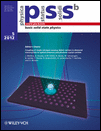
PHYSICA STATUS SOLIDI B-BASIC SOLID STATE PHYSICS
metrics 2024
Unveiling the Secrets of Electronic and Magnetic Materials
Introduction
PHYSICA STATUS SOLIDI B-BASIC SOLID STATE PHYSICS, published by Wiley-VCH Verlag GmbH in Germany, is an esteemed journal within the condensed matter physics sphere, covering pivotal advancements in basic solid state physics. With a rich history dating back to 1961, it serves as a scholarly platform for researchers, professionals, and students alike, providing insights into the fundamental properties and applications of electronic, optical, and magnetic materials. The journal currently holds a respectable Q3 ranking in both Condensed Matter Physics and Electronic, Optical, and Magnetic Materials as of 2023, indicating its impactful contributions to these fields despite its competitive landscape. While it does not offer open access, its comprehensive research findings are critical for those engaged in innovative material science research. With a convergence period extending to 2024, PHYSICA STATUS SOLIDI B continues to play a significant role in facilitating knowledge exchange and fostering advancements in solid state physics.
Metrics 2024
 0.39
0.39 1.50
1.50 1.60
1.60 119
119Metrics History
Rank 2024
Scopus
IF (Web Of Science)
JCI (Web Of Science)
Quartile History
Similar Journals
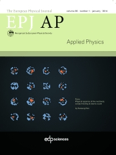
EUROPEAN PHYSICAL JOURNAL-APPLIED PHYSICS
Advancing the Frontiers of Applied PhysicsEUROPEAN PHYSICAL JOURNAL-APPLIED PHYSICS, published by EDP SCIENCES S A in France, serves as a vital platform for the dissemination of cutting-edge research in the fields of condensed matter physics, electronic, optical and magnetic materials, and instrumentation. With an ISSN of 1286-0042 and E-ISSN of 1286-0050, this journal has been a valuable resource for researchers since its inception in 1998, aiming to foster innovation and dialogue among professionals and academics alike. Featuring an impact factor that reflects its growing influence, the journal is currently ranked in the Q4 quartile for several related categories in 2023, underscoring its ongoing contributions to the scientific community despite its relatively competitive positioning. Access to the journal is available through various Open Access options, ensuring that pioneering research is readily accessible to all. As it continues to evolve towards its 2024 objectives, EUROPEAN PHYSICAL JOURNAL-APPLIED PHYSICS remains dedicated to advancing knowledge and facilitating collaboration in applied physics, making it an essential resource for students, researchers, and professionals dedicated to exploring the forefront of physical sciences.
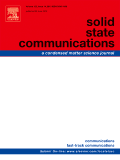
SOLID STATE COMMUNICATIONS
Bridging Research and Application in Solid-State MaterialsSOLID STATE COMMUNICATIONS is a prestigious journal published by Pergamon-Elsevier Science Ltd, dedicated to disseminating cutting-edge research in the fields of Chemistry, Condensed Matter Physics, and Materials Chemistry. With an ISSN of 0038-1098 and an E-ISSN of 1879-2766, the journal has established itself as a vital resource for researchers and professionals seeking to explore the fundamental properties and innovative applications of solid-state materials. As of 2023, it boasts a commendable standing, ranking in the Q2 quartile across its various categories, reflecting its impactful contributions to the scientific community. The journal is indexed in Scopus, further validating its relevance and quality, with notable ranks close to the median percentile in key areas. While SOLID STATE COMMUNICATIONS does not currently offer Open Access options, it remains a highly regarded source for rigorous scientific inquiry and open discussions, with a publication history dating back to 1963 and continuing to 2024. The journal serves as an essential platform for disseminating groundbreaking findings and fostering collaboration within the vibrant fields of solid state science.

Computational Condensed Matter
Empowering Researchers with High-Quality, Peer-Reviewed InsightsComputational Condensed Matter, a reputable journal published by Elsevier, serves as a critical platform for advancing the understanding of condensed matter physics and related fields. Since its inception in 2014, the journal has become a pivotal resource for researchers and professionals dedicated to exploring electronic, optical, and magnetic materials, as well as materials chemistry and general materials science. With its current standing in the Q3 quartile across multiple categories in 2023, it ranks within the 60th percentile for Materials Science (miscellaneous) and the 54th percentile for Condensed Matter Physics in Scopus, reflecting its growing influence and relevance in the scientific community. The journal aims to publish high-quality, peer-reviewed articles that can foster innovation and collaboration in computational methods applied to condensed matter systems. Researchers interested in cutting-edge insights and methodologies will find Computational Condensed Matter to be an invaluable addition to their academic resources. For those seeking to contribute to or stay informed about the latest advancements in the field, this journal is a must-read.

SEMICONDUCTORS
Unveiling the mysteries of magnetic materials.SEMICONDUCTORS, published by PLEIADES PUBLISHING INC, is a prominent journal that provides a platform for researchers and professionals in the fields of Atomic and Molecular Physics, Condensed Matter Physics, and Electronic, Optical and Magnetic Materials. With an ISSN of 1063-7826 and an E-ISSN of 1090-6479, the journal has been diligently disseminating knowledge since its inception in 1996 and continues to pave the way for innovative research until 2024. Although currently unclassified in the Open Access model, its influence is underscored by its rankings in Scopus, where it ranks in the 21st-22nd percentile across critical scientific categories. SEMICONDUCTORS serves as an essential resource for cutting-edge research, fostering a greater understanding of semiconductor materials and their applications, thereby assisting the scientific community in pushing the boundaries of technology and innovation.

Condensed Matter
Bridging Ideas in a Dynamic Scientific LandscapeCondensed Matter is a leading open-access journal dedicated to the diverse and dynamic field of condensed matter physics, published by MDPI since 2016. With its base in Switzerland, the journal aims to present a platform for researchers and professionals to share innovative findings and advancements in areas such as electronic, optical, and magnetic materials. As of 2023, it is ranked in the Q3 category for both condensed matter physics and electronic, optical, and magnetic materials, a testament to its relevance and growth within the scientific community. Researchers will find valuable insights through its accessible format, fostering collaboration and knowledge dissemination within this interdisciplinary field. With a commitment to enhancing the global dialogue in condensed matter studies, Condensed Matter invites contributions that explore theoretical and experimental approaches, thus pushing the boundaries of understanding in this crucial area of science.
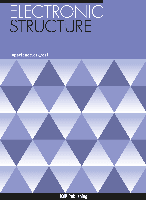
Electronic Structure
Exploring the Frontiers of Electronic PropertiesElectronic Structure is a pivotal journal in the field of condensed matter physics, published by IOP Publishing Ltd, a prominent name in the dissemination of scientific literature. Since its inception in 2019, the journal has rapidly gained recognition, currently holding a commendable Q1 ranking in Condensed Matter Physics, alongside respectable Q2 rankings in Electrical and Electronic Engineering, Electrochemistry, Electronic, Optical and Magnetic Materials, and Materials Chemistry as of 2023. With a strong emphasis on original research, reviews, and innovative methodologies, Electronic Structure serves as a vital platform for researchers, professionals, and students alike, enabling access to high-impact findings in diverse areas of study relevant to electronic structure and properties of materials. The journal ensures wide dissemination of knowledge in the engineering and physical sciences communities, making it an essential resource for anyone looking to stay at the forefront of advancements in these dynamic fields.

Journal of Physics-Materials
Exploring the Intersection of Physics and InnovationJournal of Physics-Materials, published by IOP Publishing Ltd, serves as a leading platform for disseminating groundbreaking research in the realms of Atomic and Molecular Physics, Condensed Matter Physics, and Materials Science. This Open Access journal, established in 2018, enables wide-reaching visibility and accessibility to high-impact studies, fostering international collaboration and innovation within the scientific community. With a remarkable Q1 ranking in prestigious categories and impressive Scopus rankings—positioned at #38 in Condensed Matter Physics and #29 in Atomic and Molecular Physics—this journal plays a pivotal role in shaping contemporary research and discussions in physics and materials science. Researchers, students, and professionals alike are encouraged to contribute to and engage with the rich knowledge base this journal offers, which is dedicated to advancing the frontier of materials research and its numerous applications.
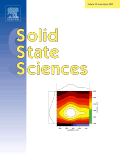
SOLID STATE SCIENCES
Pioneering Discoveries in Solid State ScienceSOLID STATE SCIENCES is an influential academic journal published by Elsevier, focusing on advancements in the fields of chemistry, condensed matter physics, and materials science. With an ISSN of 1293-2558 and an E-ISSN of 1873-3085, this journal has been at the forefront of disseminating innovative research since its inception in 1999 and is projected to continue until 2024. Positioned in the prestigious Q2 category in multiple disciplines for 2023, SOLID STATE SCIENCES ranks #87 in condensed matter physics, #101 in general chemistry, and #124 in general materials science within Scopus. Researchers and professionals in these fields will find this journal indispensable, offering open access options that enhance global visibility and accessibility of cutting-edge research, fostering collaboration and innovation. With its commitment to showcasing substantial contributions and novel methodologies, SOLID STATE SCIENCES plays a vital role in shaping the future of materials research.

JOURNAL OF ELECTRONIC MATERIALS
Unveiling the Future of Materials ScienceWelcome to the Journal of Electronic Materials, a premier publication in the field of materials science. Published by Springer, this esteemed journal has been a beacon for groundbreaking research in electronic, optical, and magnetic materials since its inception in 1972. As an established resource, it boasts a commendable impact factor and categorically ranks in the second quartile (Q2) in key areas such as Condensed Matter Physics and Electrical and Electronic Engineering, as well as holding a respectable third quartile ranking in fields related to Electronic, Optical, and Magnetic Materials and Materials Chemistry. Researchers, professionals, and students can access a wealth of knowledge as we publish original articles, reviews, and cutting-edge research that push the boundaries of science and technology in these critical fields. Stay informed and engaged as we explore advancements that shape the future of electronic materials.
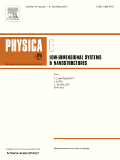
PHYSICA E-LOW-DIMENSIONAL SYSTEMS & NANOSTRUCTURES
Fostering collaboration in the world of low-dimensional physics.PHYSICA E-LOW-DIMENSIONAL SYSTEMS & NANOSTRUCTURES, published by ELSEVIER, is a premier journal dedicated to advancing the field of condensed matter and nanoscience, focusing on the innovative properties and applications of low-dimensional systems. With an esteemed Q2 ranking in multiple categories including Atomic and Molecular Physics, Condensed Matter Physics, and Nanoscience for 2023, this journal serves as a vital platform for researchers and professionals aiming to disseminate and discuss cutting-edge research. Established in 1974 and converging its focus from 1997 onwards, PHYSICA E captures the evolving landscape of material science, making it a crucial resource for anyone invested in the dynamics of electronic, optical, and magnetic materials. Although the journal operates on a subscription basis, its broad accessibility and significant placement within Scopus rankings—such as being in the 83rd percentile for Condensed Matter Physics—underscore its importance within the academic community. Researchers and students alike will find this journal a cornerstone for fostering knowledge and collaboration in the fields of nanotechnology and low-dimensional physics.